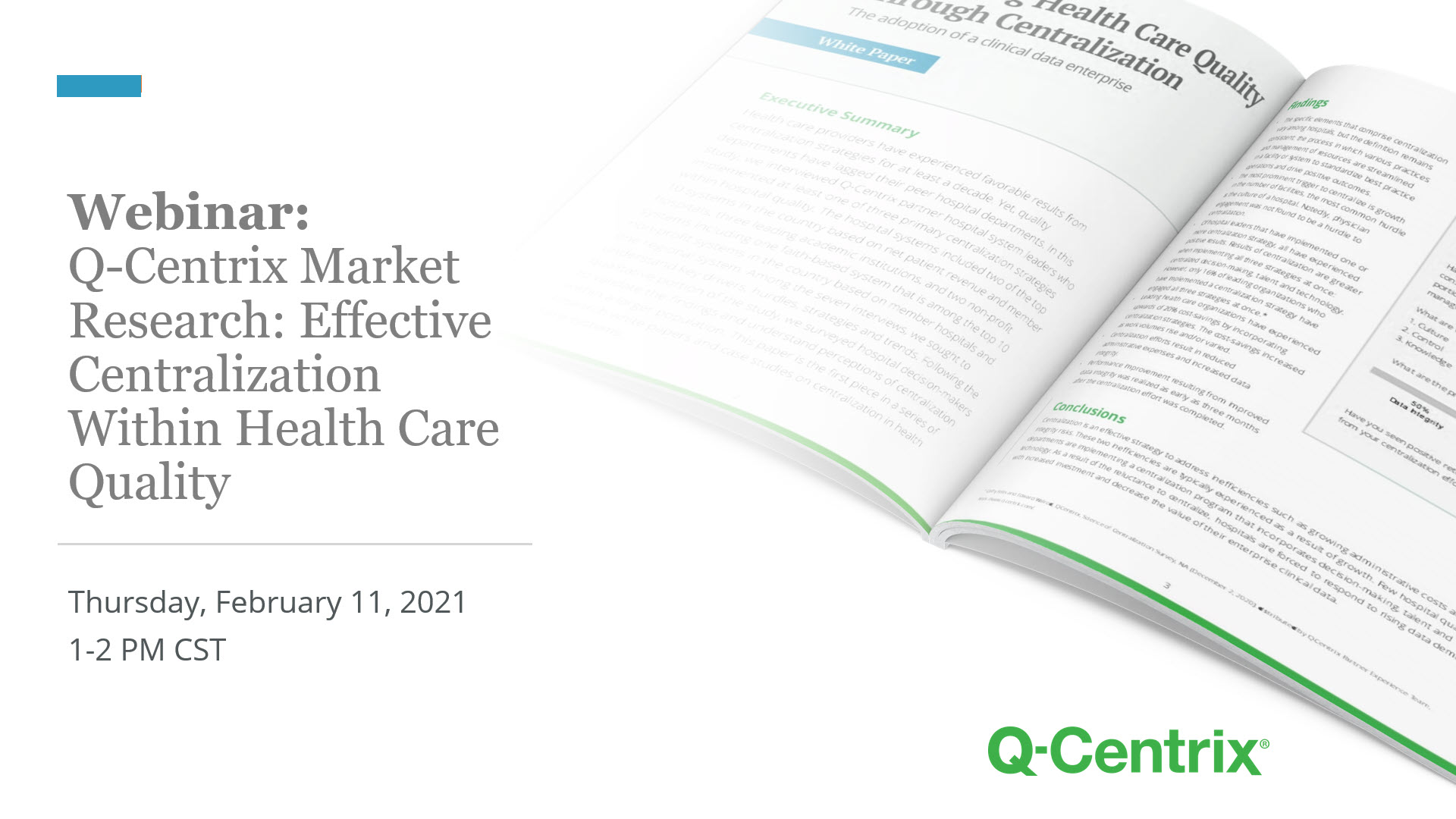It is clear health care providers have experienced favorable results from centralization strategies for at least a decade. As we continue to see growth in hospital networks, the industry is not seeing the same centralization methodologies applied to their quality departments on the same scale. To this we asked the question, why?

To find out, Q-Centrix embarked on a qualitative research study including seven hospital systems that implemented at least one of three various centralization strategies. Upon review, we identified 5 best practices of centralization within health care quality. The following are our findings.
Identify your total investment in health care quality
Generally, data is pigeonholed across many business units and departments within hospitals and health systems. If you are trying to find a budget for this, it is often not a budget line item. You can get a better understanding of the scope of this work by adding up all the costs of business units, vendors, staffing, opportunity, etc. By being able to get an overall idea of your total investment, you then have a larger goal of how you can centralize and what resources you already have working in your favor.
Nurture a quality culture focused on transformational change
Change is the only constant we know in health care, both internally and externally. Part of creating a healthy culture in quality is becoming comfortable with change, while continually striving to do and be better.
Develop a data governance program
In your centralizing efforts, people will naturally fear that they may lose their identity or autonomy within the process. We also found that people fear where the data will go and how it will be used. Transparent data governance programs build trust by involving the data owners in the process. Data governance programs can also serve as a security checkpoint. Data living in disparate areas within your organization is at risk of breaches and can end up where it should not be. Governance structures help secure data by allowing only the appropriate parties to access it.
Commit to transparency amongst stakeholders
Transparency amongst stakeholders means those who should have access to data do and are able to collaborate when needed. It also means not weaponizing data, which can be used to focus on how to improve practices and best communicate data to all parties.
Secure an enterprise-ready technology
Too often, centralization efforts are held back by technology that is not inclusive of an entire system, and it can be hard to aggregate data. You may be missing out on opportunities to improve your quality outcomes. Technology plays an important role in bringing forward your centralization efforts. If you are participating in a particular registry or regulatory reporting program, make sure you have a technology platform for that service line or registry that can deliver actionable data in the way you need it, when you need it.
Centralizing your health care quality can be challenging and daunting, but you do not have to do it alone. With multiple success stories accumulated, we are here to help.
For more guidance on your centralization efforts, watch the Effective Centralization Within Health Care Quality webinar hosted by Doug McGill and Connie Cook below.

Learn more about partnering with us on centralization and all our solutions at Q-Centrix.com.